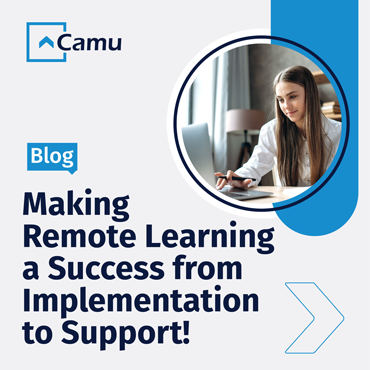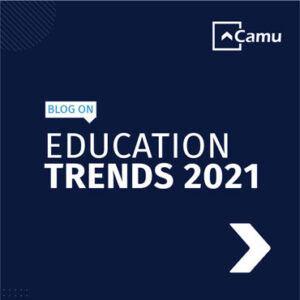
Making Remote Learning A Success
COVID-19 has created a sudden and dramatic shift in the way we live, the way we work, and the way we learn. The pandemic has reshaped how education is being imparted, delivered, and facilitated. In just a blink of an eye, institutions have had to transition from a physical to a digital learning environment.
Either they rethink, or become extinct. And the only way to move forward is to embrace remote learning successfully.
Our webinar titled ‘Making Remote Learning A Success’ sought to understand exactly how schools, universities and colleges adopted this change. It brought about many interesting perspectives that we have summarised into an easy read!. The discussion was led by expert panellists including:
- AR Swami, Co-founder and CEO of Camu
- Chester Catilago, Director of Centre for Education Innovation at Teachers College, Manila, and
- Dr. Aditya Sharma, Registrar of Teerthanker Mahaveer University
Selecting the right vendor
There is a dearth of technology out there.
The market is saturated with smart, agile EdTech solutions. Platforms, tools, resources, systems, databases, features, tabs – it’s all too complex to process. LMS, SIS, ERP, STEM… the list goes on!
But which one is the right one for your institution? Which one will smoothly align to your institution’s goals and objectives? Which one will satisfy all your stakeholder criteria?
Remote learning can only take off if you have the right strategy in place and pick the right technology partner to assist you. One wrong decision on your part and your institute is at risk of losing time, money, resources, energy and morale.
Webinar Tip: Define your objectives clearly and build a strategy around it. Select a vendor that will help you facilitate this strategy seamlessly.
Recruiting and retaining talent
Technology is only a means to an end.
Having the right tools in place doesn’t necessarily equate to higher productivity nor good performance, especially if the users are unable to navigate the system well.
Which is why it’s imperative to nurture, motivate and incentivise human resources, so that they have a better chance of onboarding and integrating into the online space.
Teachers must be digitally literate. They must be proficient and skilled enough to build curriculums, schedule classes, deliver lectures, conduct assessments, provide feedback, and more. Moreover, they must be able to gauge student requirements and keep them engaged.
Webinar Tip: Organise a separate product demo for teachers. Let them identify any discrepancies within the system, so that it may be rectified before students are added to the mix.
Putting student needs at the forefront
Since the student and teacher are separated by distance and often time (cannot meet as in a traditional classroom setting), remote learning needs to be all the more impactful.
Of course, compared to on-campus classes, it is challenging to engage students in meaningful activities in the online space. However, the key is to keep building opportunities for student-to-content interaction through a flipped classroom approach.
Students can prepare for the course by completing readings before attending class. This takes care of the “remember” and “understand” domains of Bloom’s Taxonomy. During class, students may “apply” their knowledge towards debates and discussions. Finally, assessments will help stimulate the “analyse”, “evaluate” and “create” domains.
Primary, secondary or higher education – students come in with their own degree of knowledge, experience, and prior understanding. Institutions must, therefore, design content that meets their expectations.
Webinar Tip: Build curriculum and lesson plans that imbibe in students the right combination of cognitive, affective, and psychomotor skills, so that they may achieve desired outcomes.
Aligning academic, administrative and leadership functions
Effective remote learning is not only about ensuring student-teacher efficacy; there are many other departments, higher and lower level, that must work together in sync, to create cross-departmental cohesion. Front and back-office functions must befriend each other.
In particular, the administrative department must be able to cope with the transition from physical to digital. Digitisation can prove to be a very complex process with regards to data collection and record keeping. Hence, there needs to be adequate training and support given to all parties.
When it comes to making important decisions, senior management should look into building effective, two-way communication channels between the top and bottom. If leadership aligns itself to the needs of all stakeholders, the institution will be better equipped to embrace the change.
Webinar Tip: Make sure there is synergy between faculty and management. A flatter hierarchy leads to quicker decision-making! Remember, technology is always changing, even as you read this blog. Staying relevant and up-to-date is the need of the hour. More so, making sure that stakeholders are using the right tools, at the right time, in an intended manner, is sacrosanct.







